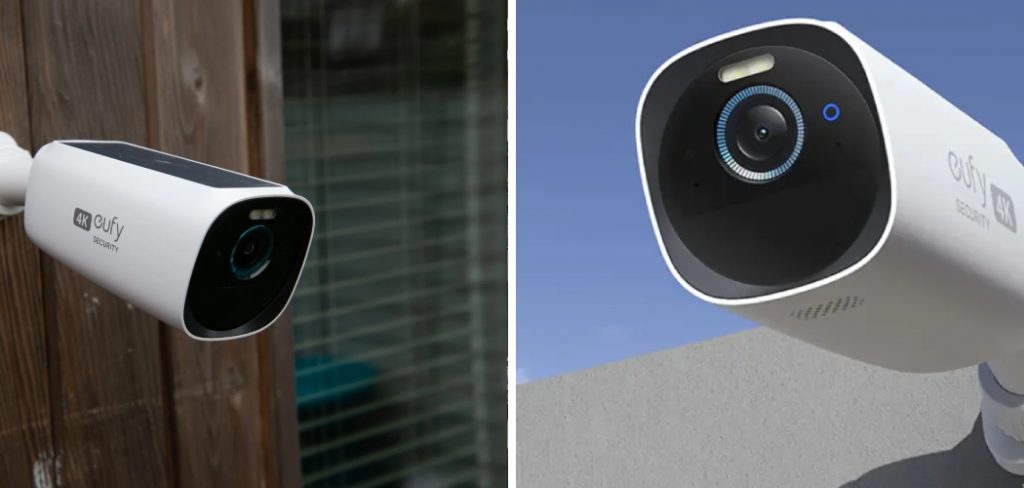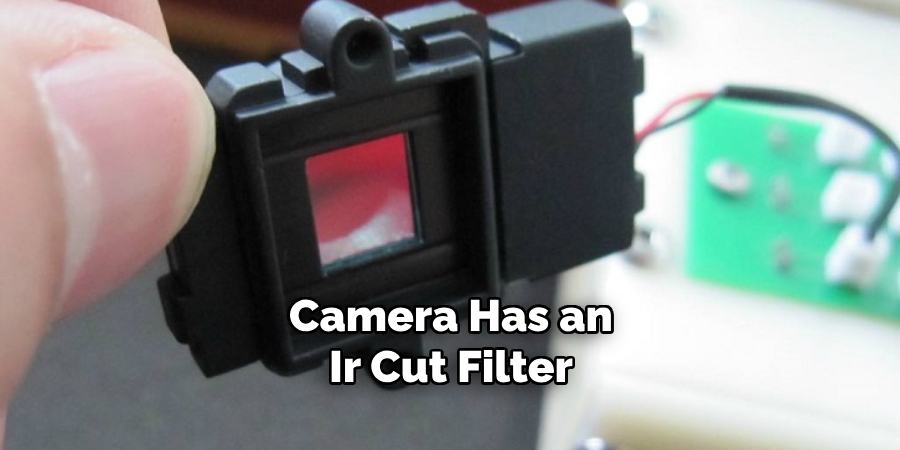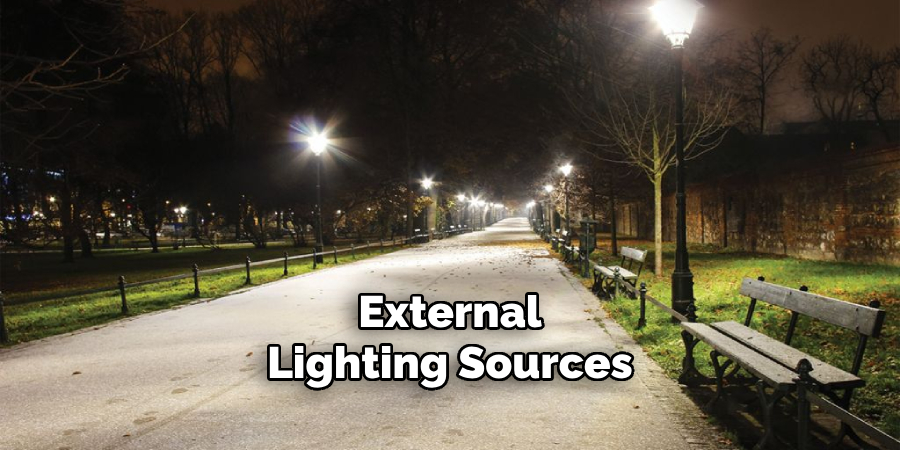CCTV cameras have become an integral part of our lives, providing unprecedented security and keeping a watchful eye over our homes and businesses. However, If you have ever tried to capture an image in a dark room with a CCTV camera, you may have noticed the often harsh and grainy quality of the image produced when the camera switches to infrared (IR) mode.
Fear not; disabling IR is not just easy, but it should improve the camera’s image in low light conditions and cut maintenance costs. In this blog post, we will guide you through the simple steps for how to disable IR on CCTV camera.

Can You Disable IR on CCTV Camera?
When it comes to CCTV cameras, there are a lot of features to consider. One such feature is the infrared (IR) capability, which allows the camera to see in low-light conditions. While this can be incredibly helpful, there may be times when you want to disable the IR function.
Perhaps you don’t want the camera to be visible at night, or maybe you want to avoid disturbing nearby wildlife. Whatever the reason, disabling the IR function on some CCTV cameras is possible. However, the process varies depending on the make and model of the camera. It’s essential to consult the user manual or contact the manufacturer for guidance on disabling the IR function on your specific camera.
Why Should You Disable IR on CCTV Cameras?
CCTV cameras have become an indispensable tool for monitoring and surveillance in the modern world. To get the best out of these cameras, it is important to know how to use them effectively. One of the most important things you can do to enhance your CCTV cameras’ performance is disabling IR.
This may seem counterintuitive, but there are several reasons why disabling IR can be beneficial. First, IR can interfere with other infrared devices, reducing performance. Second, disabling IR can help to reduce false alarms and noise, giving you a clearer view of the monitored area. Finally, by disabling IR, you can extend your camera’s lifespan and avoid unnecessary repairs. So, to get the most out of your CCTV cameras, consider disabling IR.
7 Steps to Follow on How to Disable IR on CCTV Camera
Step 1 – Check if Your Camera Has an IR Cut Filter
Before disabling IR, ensure your camera has an IR cut filter. This mechanical filter sits in front of the camera’s sensor and helps block infrared light. If your camera doesn’t have an IR cut filter, it can’t capture accurate color images, and disabling IR will only worsen rather than enhance your image quality.

Step 2 – Access the Camera’s Settings
The next step is to access the camera’s settings to disable IR. The easiest way to do this will depend on your camera’s manufacturer and model. Still, it usually involves connecting your camera to your computer via Ethernet or Wi-Fi. Once connected, access the camera’s web interface and click on the settings tab.
Step 3 – Turn Off the IR Function
Look for the section labeled “IR” or “Night Mode” in the settings and turn it off. Once you’ve switched it off, the camera should no longer switch to IR mode when the light conditions become too low and will instead capture images in regular mode.
Step 4 – Adjust the Camera’s Sensitivity Levels
Often, when IR is disabled, the camera’s sensitivity level will be lowered automatically to compensate for the loss of light. Before leaving the settings menu, check the sensitivity level adjustment and increase or decrease it to ensure the camera delivers clear images in the dark.
Step 5 – Test the Camera’s Performance
After adjusting the sensitivity levels, test your camera’s performance in low light conditions. If you notice any image quality or visibility issues, you may need to fine-tune the camera’s settings further. Finding the right balance between disabling IR and maintaining good image quality may take a few tries.
Step 6 – Consider External Lighting Options
Consider adding external lighting sources if your camera still struggles to capture clear images in low light without IR. This could include floodlights or infrared illuminators specifically designed for CCTV cameras. Additional lighting can help improve image quality and reduce the need for IR.

Step 7 – Regularly Check Your Camera’s Settings
Lastly, regularly check your camera’s settings to ensure IR is still disabled and the sensitivity levels are adjusted correctly. Environmental factors such as changes in lighting or weather can affect image quality, so it’s essential to stay on top of your camera’s settings for optimal performance.
These are the steps you need to follow on how to disable IR on CCTV camera effectively. Remember to always check if your camera has an IR cut filter and regularly monitor its performance to ensure quality images are captured in all light conditions.
With the right settings and adjustments, you can improve your CCTV camera’s functionality and protect your property with clear footage day or night. So be proactive and take control of your CCTV cameras today by disabling IR when necessary.
5 Considerations Things When You Need to Disable IR on CCTV Camera
1. Check the Camera’s Manufacturer’s Specifications
Before disabling the infrared (IR) feature on a CCTV camera, it is important to check the manufacturer’s specifications for the particular camera model. Depending on the type of camera and its capabilities, disabling IR may not be possible or recommended. It is also important to ensure the camera’s warranty will not be voided if IR is disabled.
2. Consider Your Lighting Conditions
When deciding whether or not to disable IR on a CCTV camera, it is important to consider your lighting conditions. If you are using a low-light environment, then disabling IR may reduce image quality as the camera can no longer take advantage of ambient light sources such as street lamps or moonlight. On the other hand, if you are using high light levels, disabling IR may improve image quality as there will be less interference from reflected infrared light.
3. Evaluate Your Surveillance Goals
It is also important to evaluate your surveillance goals when considering whether or not to disable IR on a CCTV camera. If you are looking for facial recognition or detailed identification of people and objects, then enabling IR may provide better results than disabling it. However, if you are simply looking for general surveillance, then disabling IR may help reduce false alarms caused by reflections off glass surfaces or other reflective materials in the scene.

4. Analyze Cost vs Benefits
When deciding whether or not to disable IR on a CCTV camera, it is important to analyze the cost vs benefits of doing so. Disabling IR can help reduce false alarms and improve image clarity in some cases; however, it can also limit low-light performance and increase overall costs due to additional lighting requirements or replacement cameras with higher resolution sensors that perform better in low-light conditions without needing infrared assistance.
5. Test Before Finalizing Decision
Finally, before deciding whether to disable IR on a CCTV camera, it is important to test out different scenarios and settings to determine which option provides the best results for your specific application and environment. This testing should include both day and nighttime scenarios to get an accurate picture of how well each setting works under different lighting conditions.
Benefits of Disable IR on CCTV Cameras
Disable IR may seem like an insignificant feature to some, but it can actually provide numerous benefits for CCTV cameras. One of the most important benefits is the prevention of reflection and glare. When IR is enabled in low light environments, it can reflect off nearby objects and cause an annoying glare in the camera’s footage.
Disabling IR can eliminate this issue and produce clearer, more accurate video footage. Another benefit of disabling IR is the reduction of power consumption. IR requires a significant amount of power, which can drain your camera’s battery life quickly. By disabling IR, you can extend the life of your battery and save money on replacement batteries. Overall, disabling IR on your CCTV camera can enhance the quality of your footage and improve the longevity of your device.

Conclusion
Disabling IR on a CCTV camera is a straightforward process, and it can be done by accessing the camera’s settings and turning off the IR or night mode function. However, before you make these changes to your camera, ensure that your camera has an IR cut filter.
If you aren’t confident in changing the camera’s settings, consult an expert to avoid any accidental damage. Once you have properly disabled IR, you should expect to see an improvement in your camera’s image quality at night, especially when the light conditions are low. We hope this guide has helped teach you How to Disable IR on CCTV Camera.
About
Safety Fic is a distinguished figure in the world of Diy design, with a decade of expertise creating innovative and sustainable Diy solutions. His professional focus lies in merging traditional craftsmanship with modern manufacturing techniques, fostering designs that are both practical and environmentally conscious. As the author of diy, Safety Fic delves into the art and science of Safety Fic-making, inspiring artisans and industry professionals alike.
Education RMIT University
(Melbourne, Australia) Associate Degree in Design (Safety Fic) Focus on sustainable design, industry-driven projects, and practical craftsmanship. Gained hands-on experience with traditional and digital manufacturing tools, such as CAD and CNC software.
Nottingham Trent University
(United Kingdom) Bachelor’s in diyfastly.com and Product Design (Honors) Specialized in product design with a focus on blending creativity with production techniques. Participated in industry projects, working with companies like John Lewis and Vitsoe to gain real-world insights.
Publications and Impact
In diy, Safety Fic his insights on indoor design processes, materials, and strategies for efficient production. His writing bridges the gap between artisan knowledge and modern industry needs, making it a must-read for both budding designers and seasoned professionals.
